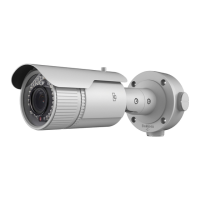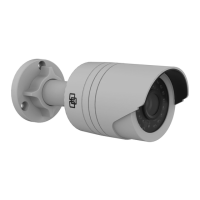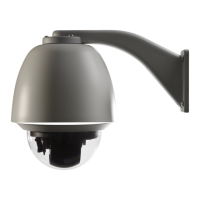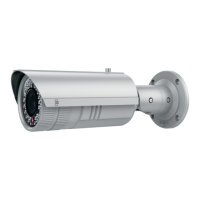Do you have a question about the Interlogix TVW-3101 and is the answer not in the manual?
Lists the various TruVision 11/31 Series IP camera models covered by this manual.
Guides on accessing the camera via a web browser and configuring security settings.
Explains the camera's web browser interface and its primary functions for monitoring and control.
Configuring local parameters, system time, and basic device information.
Setting up TCP/IP, ports, DDNS, Wi-Fi, and other network parameters for camera access.
Adjusting video/audio quality, resolution, frame rate, and ROI for optimal recording.
Optimizing image settings like brightness, contrast, day/night modes, and OSD display.
Configuring motion detection zones, sensitivity, arming schedules, and linkage actions.
Setting up tamper-proof alarms and defining how the camera reports system exceptions.
Managing external alarms, cross-line detection, and intrusion detection features.
Setting up scheduled and event-triggered snapshots, and managing captured images.
Configuring network storage (NAS) and managing camera storage devices, including formatting.
Defining schedules for when the camera should record video based on time or events.
Creating, managing, and securing user accounts with different permission levels.
Implementing IP filters, RTSP authentication, and managing security services like Telnet.
Restoring defaults, managing configuration files, and upgrading camera firmware.
Using the live view function and playing back recorded video from storage.
Searching and retrieving event logs and archived snapshots from the camera.
Lists the various TruVision 11/31 Series IP camera models covered by this manual.
Guides on accessing the camera via a web browser and configuring security settings.
Explains the camera's web browser interface and its primary functions for monitoring and control.
Configuring local parameters, system time, and basic device information.
Setting up TCP/IP, ports, DDNS, Wi-Fi, and other network parameters for camera access.
Adjusting video/audio quality, resolution, frame rate, and ROI for optimal recording.
Optimizing image settings like brightness, contrast, day/night modes, and OSD display.
Configuring motion detection zones, sensitivity, arming schedules, and linkage actions.
Setting up tamper-proof alarms and defining how the camera reports system exceptions.
Managing external alarms, cross-line detection, and intrusion detection features.
Setting up scheduled and event-triggered snapshots, and managing captured images.
Configuring network storage (NAS) and managing camera storage devices, including formatting.
Defining schedules for when the camera should record video based on time or events.
Creating, managing, and securing user accounts with different permission levels.
Implementing IP filters, RTSP authentication, and managing security services like Telnet.
Restoring defaults, managing configuration files, and upgrading camera firmware.
Using the live view function and playing back recorded video from storage.
Searching and retrieving event logs and archived snapshots from the camera.
| IR LED | Yes |
|---|---|
| Video Compression | H.264, MJPEG |
| Audio Compression | G.711 |
| Ingress Protection | IP66 |
| Night Vision | Yes |
| Connectivity | Wired |
| Sensor Type | CMOS |
| IR Distance | 30m (98ft) |
| Day & Night | Yes |
| Frame Rate | 30fps |
| Image Settings | Brightness, Contrast, Saturation, Sharpness, White Balance, Exposure Control, Backlight Compensation |
| Network Storage | NAS |
| Protocols | TCP/IP, UDP, HTTP, HTTPS, DHCP, DNS, DDNS, RTP, RTSP, RTCP, NTP, SMTP, FTP, UPnP, Bonjour, 802.1x, QoS, IPv4, IPv6 |
| Interface | 10/100 Base-T Ethernet |
| Alarm Input/Output | 1 input / 1 output |
| Audio Input/Output | 1 input / 1 output |
| On-board storage | MicroSD card slot (up to 128GB) |
| Power Supply | 12V DC, PoE (802.3af) |
| Network Interface | 10/100 Base-T Ethernet |











